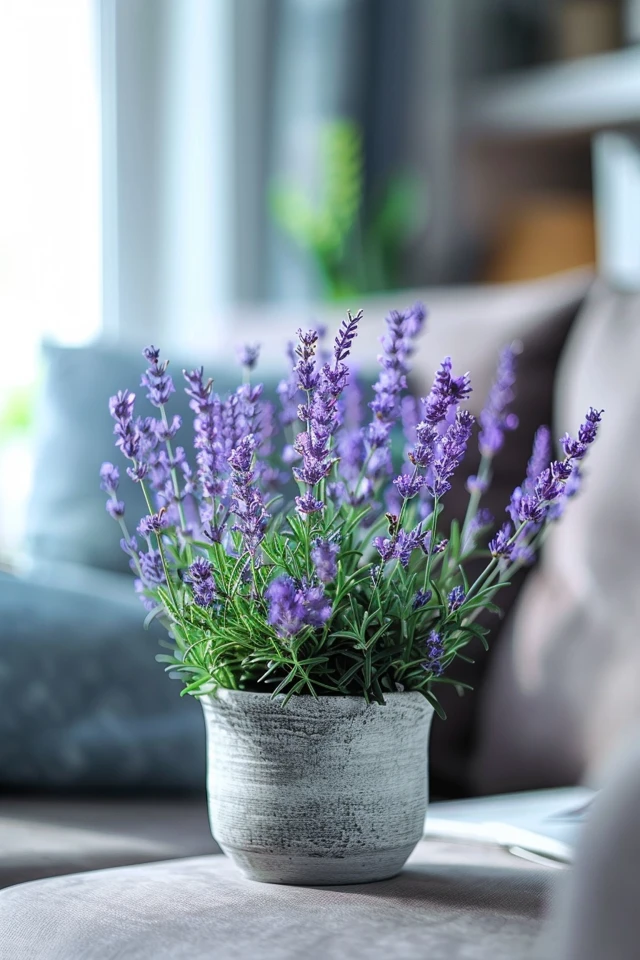When it comes to caring for your lavender plants, it’s essential to provide them with the right nourishment. However, you must be cautious not to over-fertilize or overwater them, as this can lead to their demise. Lavender plants thrive in nutrient-poor soil and have specific fertilization needs. In this article, I will guide you on how to fertilize your lavender properly, ensuring their growth and enhancing their beauty.
To nourish your lavender plants effectively, it’s crucial to follow the right techniques and provide appropriate care. By understanding the specific needs of lavender, you can create an environment that encourages healthy growth and vibrant blooms. Let’s explore some tips and techniques for fertilizing your lavender plants:
Key Takeaways:
- Overwatering and over-fertilizing lavender plants can be detrimental to their health.
- Lavender prefers nutrient-poor soil and should only be fertilized once in the spring.
- Compost or a small amount of slow-release fertilizer are suitable options for lavender fertilization.
- Avoid over-fertilizing, as it may cause excessive foliage growth, lack of flowers, or even plant death.
- Providing lavender with the right growing conditions is more vital than excessive fertilization.
When and How to Feed Lavender Plants
Feeding lavender plants at the right time and with the appropriate nutrients is crucial for their health and vibrant growth. By understanding the optimal feeding schedule and methods, you can ensure that your lavender thrives throughout the growing season.
The best time to feed lavender is in the spring, at the start of the growing season. At this time, the plant is entering its active growth phase and requires a nutrient boost to support its development. Springtime lavender fertilization sets the foundation for a productive and visually appealing plant.

Springtime Lavender Fertilization
To fertilize lavender in the spring, you have two excellent options: compost or slow-release fertilizer. Both options provide the necessary nutrients without overwhelming the plant.
- Compost for Lavender: Applying approximately an inch of well-rotted compost around the base of the plant ensures a slow release of nutrients over time. This enriches the soil and provides a balanced nutrition source for the lavender.
- Slow-release Fertilizer for Lavender: Another effective method is using a small amount of slow-release fertilizer specifically formulated for lavender. These fertilizers come in granular form and release nutrients gradually, providing sustained nourishment throughout the growing season.
It is crucial not to over-fertilize lavender, as excessive nutrients can harm the plant and hinder its ability to produce flowers. Remember, lavender prefers nutrient-poor soils, so a modest approach to fertilization is key.
Avoid Fall Fertilization
While lavender requires springtime fertilization, it is essential to avoid feeding the plant in the fall. Fertilizing during autumn can stimulate tender new growth that is susceptible to damage during the winter months. Instead, focus on providing the plant with adequate soil moisture and protection from harsh weather conditions.
A little goes a long way when it comes to feeding lavender plants. By adhering to a springtime fertilization routine and using compost or slow-release fertilizer, you can ensure that your lavender receives the nutrition it needs without compromising its overall health.

The Dangers of Over-Fertilizing Lavender
Over-fertilizing lavender can have detrimental effects on its overall health and appearance. One of the most common problems associated with excessive fertilization is the development of excessive foliage growth. While lush leaves may seem desirable, they can overshadow the beautiful flowers that lavender is known for, leading to a lack of blooms.
Furthermore, over-fertilization can result in yellowing leaves on lavender plants, indicating nutrient imbalance and potential damage. The excess nitrogen from the fertilizer disrupts the natural growth cycle of lavender, causing weak and stunted growth. This can leave the plants vulnerable to diseases and pest infestations, such as whiteflies and aphids, which are attracted to the nutrient-rich foliage.
To avoid these issues, it is crucial to provide lavender with the right growing conditions instead of relying on excessive fertilization. Lavender plants thrive in poor soil with limited nutrients. While a small amount of compost or a slow-release fertilizer in the spring may provide the necessary nourishment, it is important not to overdo it. Remember, less is more when it comes to feeding lavender. By maintaining a balanced approach to fertilization, you can ensure healthy and vibrant lavender plants.


